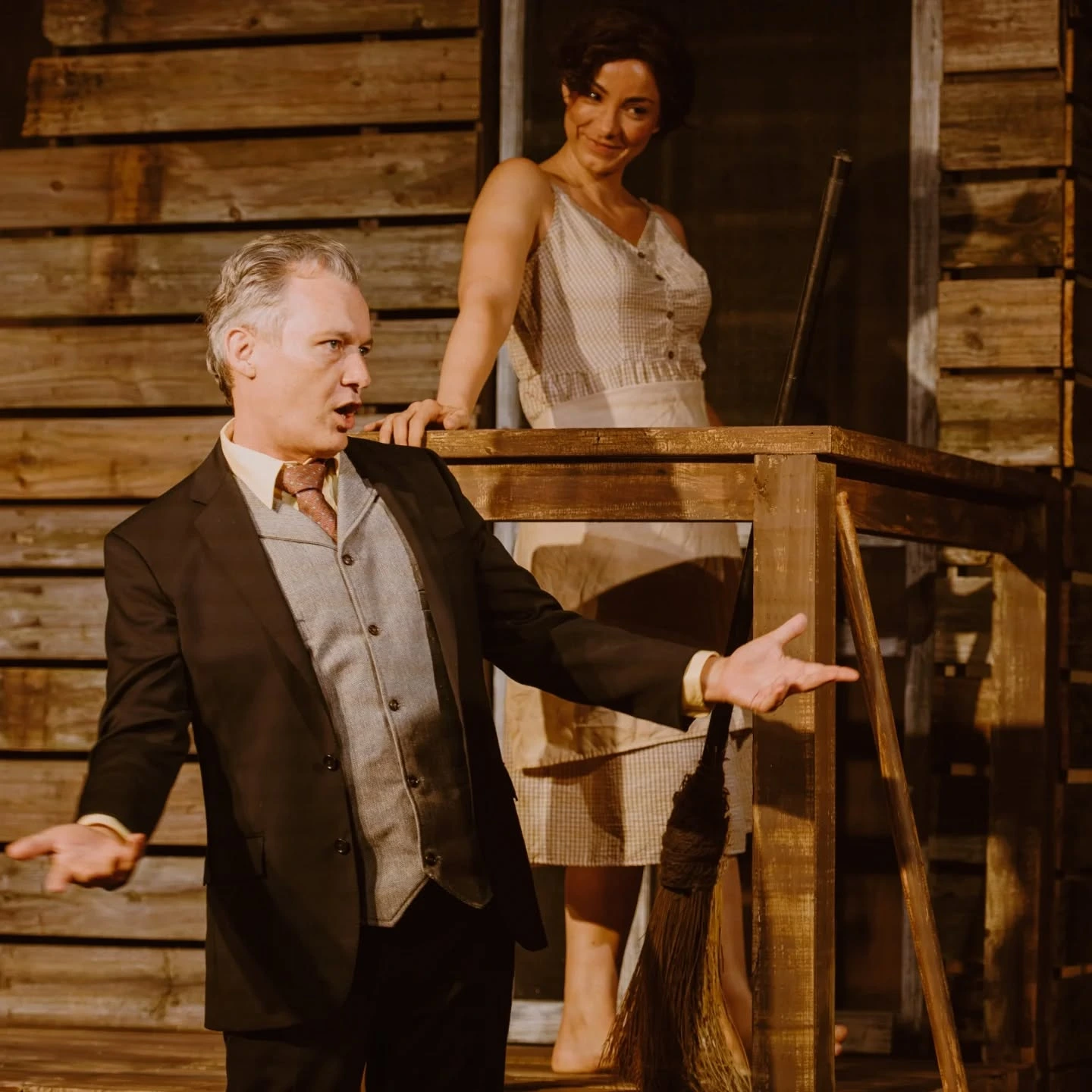JaxPlays applauds our sponsors. Join them.
Raw Emotion and Stark Honesty Define ABET's 'A Moon for the Misbegotten'
- 5 minutes read - 991 wordsIn Eugene O’Neill’s A Moon for the Misbegotten, the past hangs heavy over a Connecticut farm where resentment, survival and yearning intertwine. Josie Hogan, the sharp-tongued daughter of an aging tenant farmer, scrapes out a life shaped by both hardship and wit. Her father, Phil, schemes to secure the family’s land from their landlord, James Tyrone Jr., whose charm masks deep grief and self-loathing. What begins as a bluff for ownership becomes a night of searing honesty, as Josie and Tyrone’s defenses crumble and their pain is laid bare beneath the moonlight.
ABET - All Beaches Experimental Theatre’s production at WJCT Studio B, directed by Tyler Hammond, thrives in the intimacy of Studio B’s black box setting. The closeness of the audience to the actors transforms O’Neill’s dense realism into something immediate and piercing, where every silence resonates and every glance feels magnified.
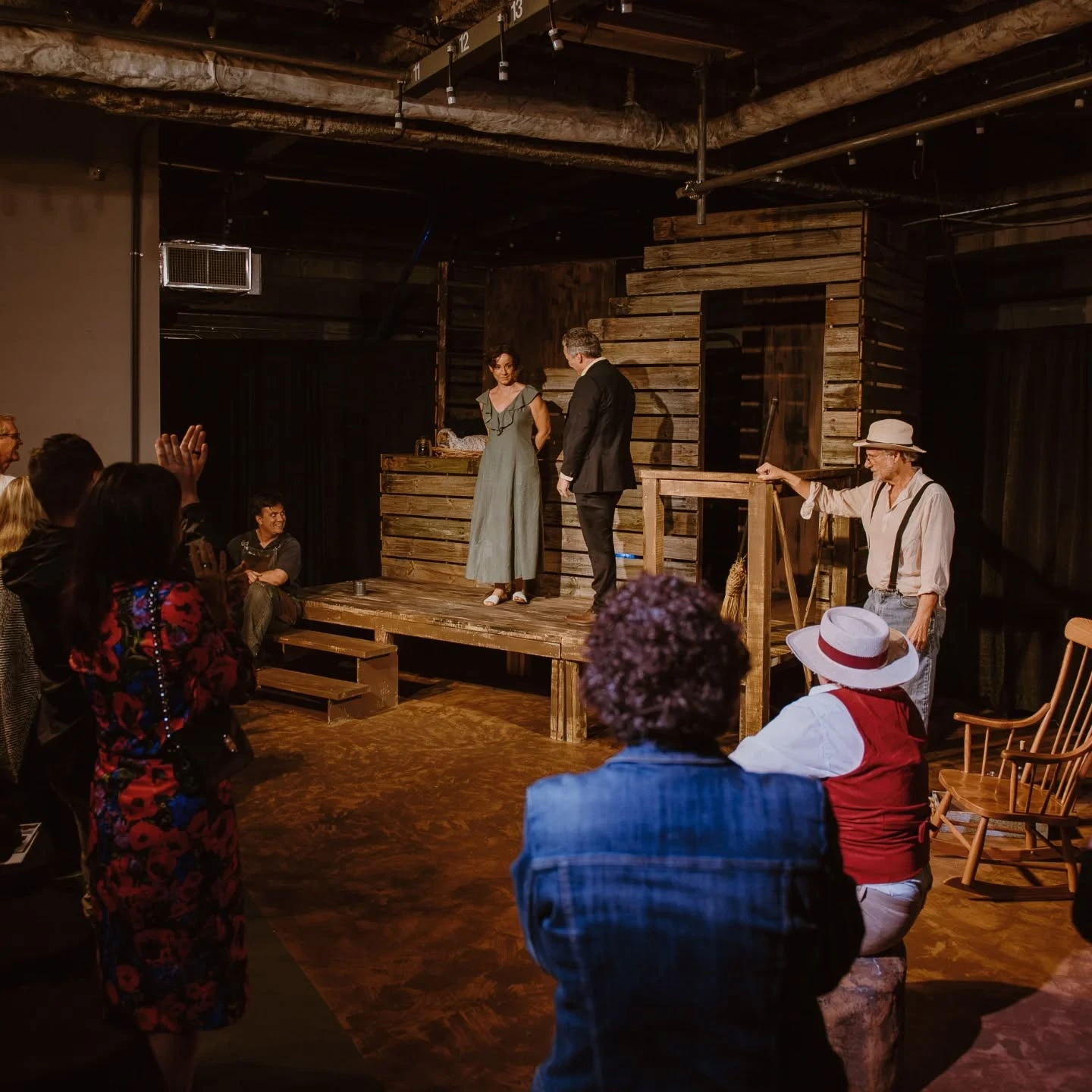
Jessica Racaniello gives Josie Hogan a fierce, lived-in vitality. Her Josie feels carved out of the soil she stands on — tough, sly and unafraid of her own sharpness. She’s deliciously ornery, sardonic and endlessly watchable. Every glance and gesture carries the memory of labor and loss, yet beneath the grit there’s a quiet pulse of longing. Racaniello doesn’t soften Josie or lean into sentiment; she trusts the character’s contradictions, letting humor and heartbreak coexist in the same breath. The result is a performance that feels rooted in experience rather than artifice.
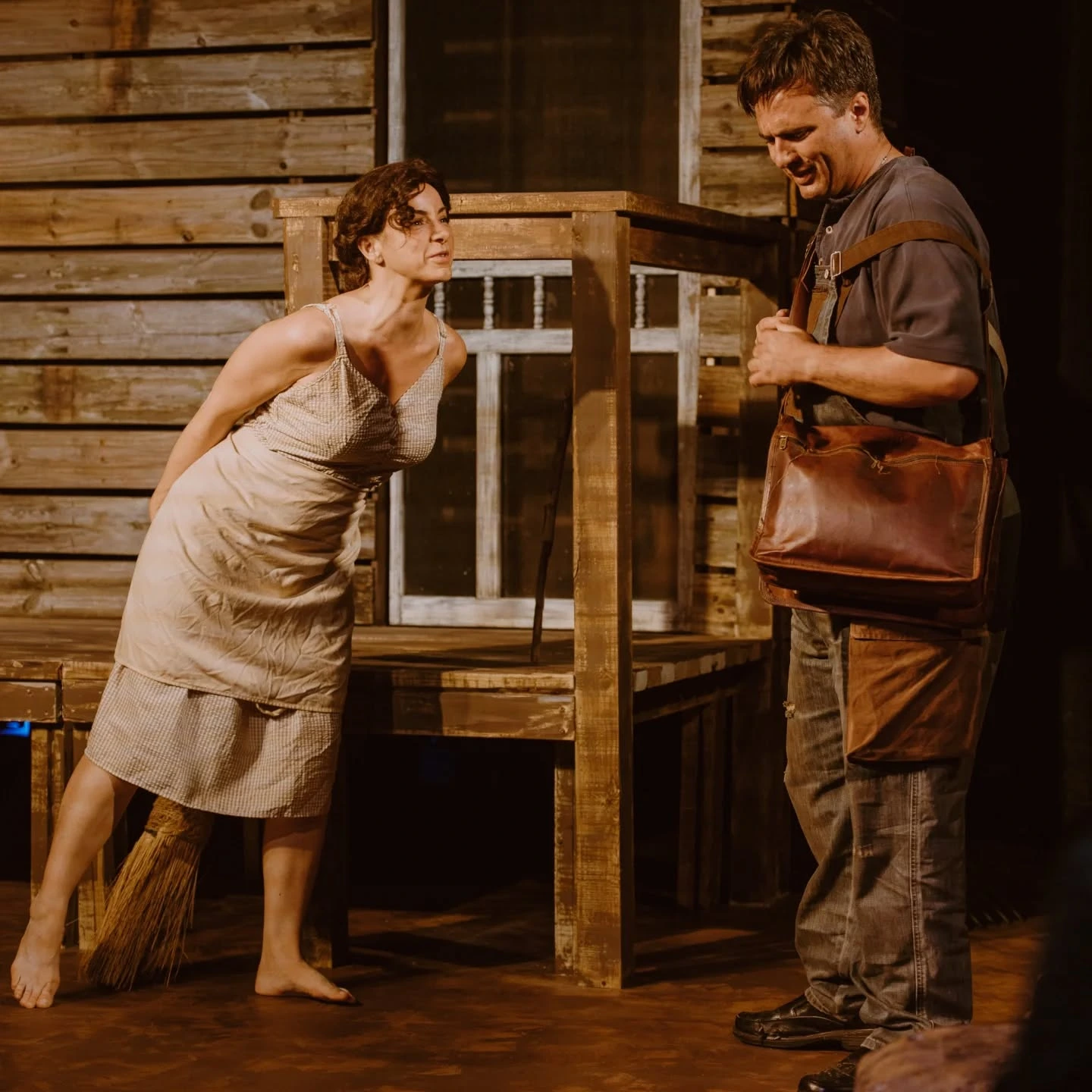
Scott Broughton’s James Tyrone Jr. is a man trying to charm his way out of despair, and Broughton captures that tension with remarkable nuance. His Tyrone moves easily between wit and weariness, the brightness in his eyes dimming as the night wears on. His emotional range gives the production its pulse — by turns jovial, broken and raw. His descent into drunkenness, a moment that can so easily slip into caricature, is rendered with remarkable subtlety, allowing Tyrone’s weariness to surface gradually and truthfully. Broughton lets the character’s exhaustion creep in until Tyrone’s bravado gives way to something raw and unguarded, capturing the subtle, heartbreaking blur between melancholy and self-destruction.
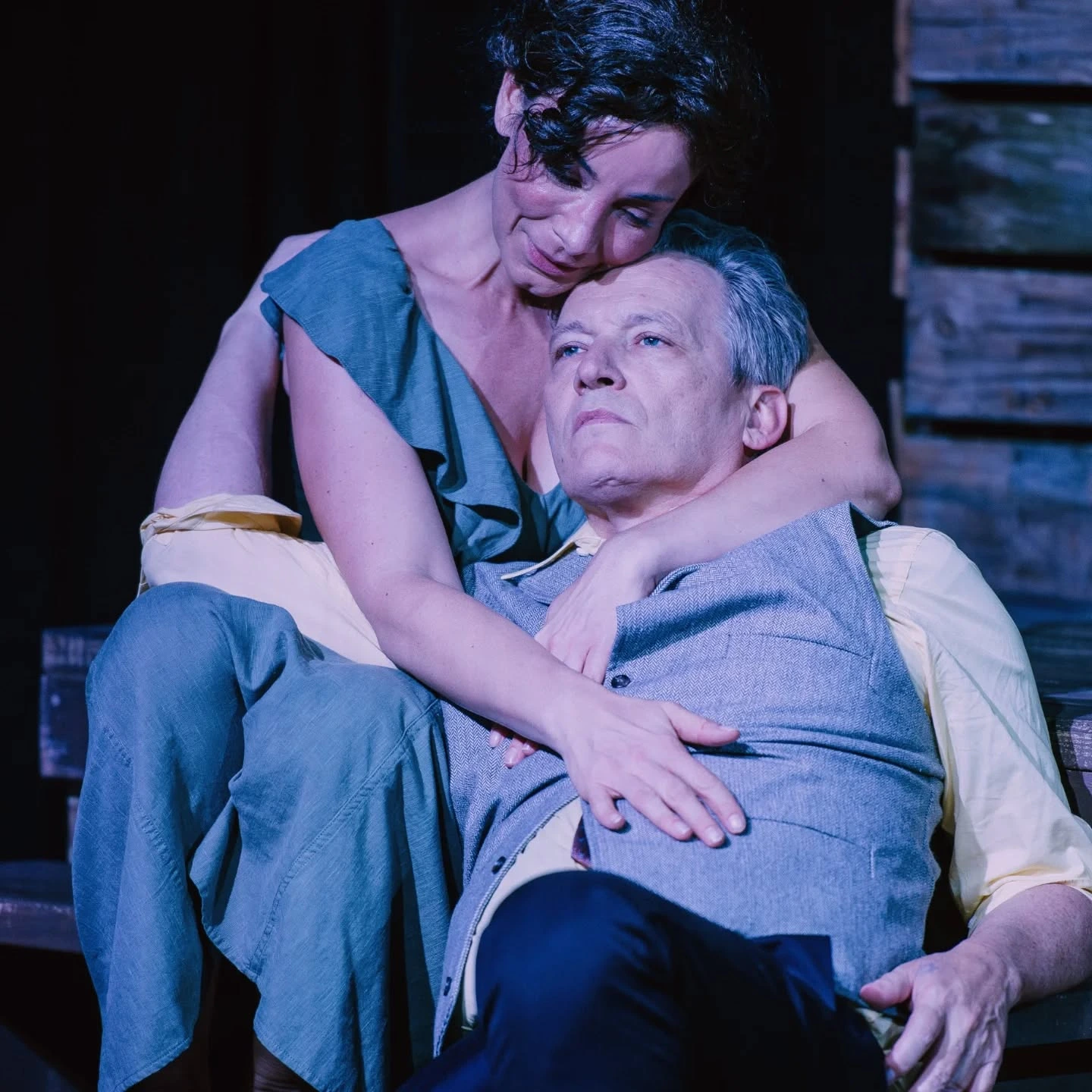
Anthony Hodge brings grit and humor to Phil Hogan. He gives the old farmer a wiry intelligence and an edge of mischief that keeps every exchange alive. Hodge’s sense of rhythm and timing makes his banter with Josie sparkle, though his accent often slips from its intended shape. Still, the performance feels honest and textured. Phil’s shrewdness and affection play against each other in a way that feels deeply recognizable. You sense both the schemer and the father, each vying for control in every line he speaks.
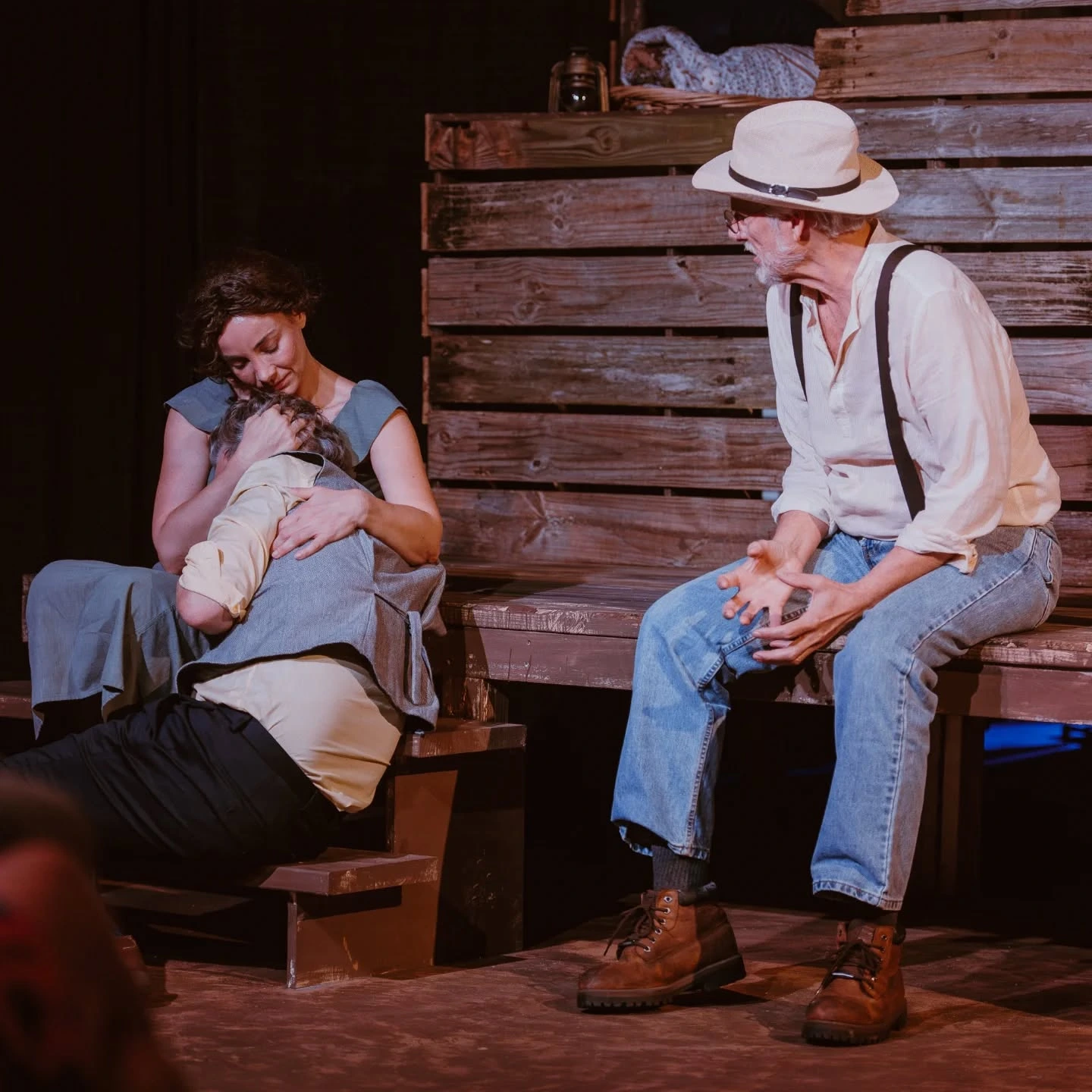
Troy Rossi as Mike Hogan and Scott Campbell as T. Stedman Harder lend essential texture, grounding the early moments of the play with levity before the story plunges into deeper waters.
Hammond’s direction demonstrates both discipline and empathy for O’Neill’s marathon script. At two and a half hours plus a 15 minute intermission, the pacing never drags. His triple role as director, set designer and lighting designer creates a unified aesthetic vision. Hammond’s set is a strikingly beautiful and formidable creation that commands attention the instant you step inside. It rises like a weathered confession, and with its slatted wooden panels and jagged corner seemingly torn away, feels both practical and poetic — a structure revealing the soul of those who inhabit it. The subtle lighting drifts from harsh daylight to ghostly moonlight, guiding the audience through the play’s shifting moods with an almost imperceptible grace.
David Buchman’s costumes ground the production in quiet authenticity. Josie’s wardrobe, reminiscent of a pattern one might have found in a vintage Simplicity or McCall’s catalog, captures the practicality and modest grace of her world. The garments look handmade and well-worn, shaped by repetition and necessity rather than vanity. Phil’s outfit, with its faded shirt, suspenders, Levi’s and sturdy boots, suits the working farmer’s life, though the modern boots break the illusion slightly. On a proscenium stage the detail might slip by unseen, but in the intimacy of the black box, that small inconsistency draws the eye. In contrast, Jim Tyrone’s gray suit carries the weary elegance of a man clinging to gentility — well-cut but softened by use, much like the character himself. Harder’s bold red vest and straw hat strike a brighter, almost theatrical note, their crispness underscoring his position as an outsider in this rough, weather-beaten landscape. Together, the costumes form a visual map of class, pride and fatigue, a reminder that even in O’Neill’s world, clothing is both armor and confession.
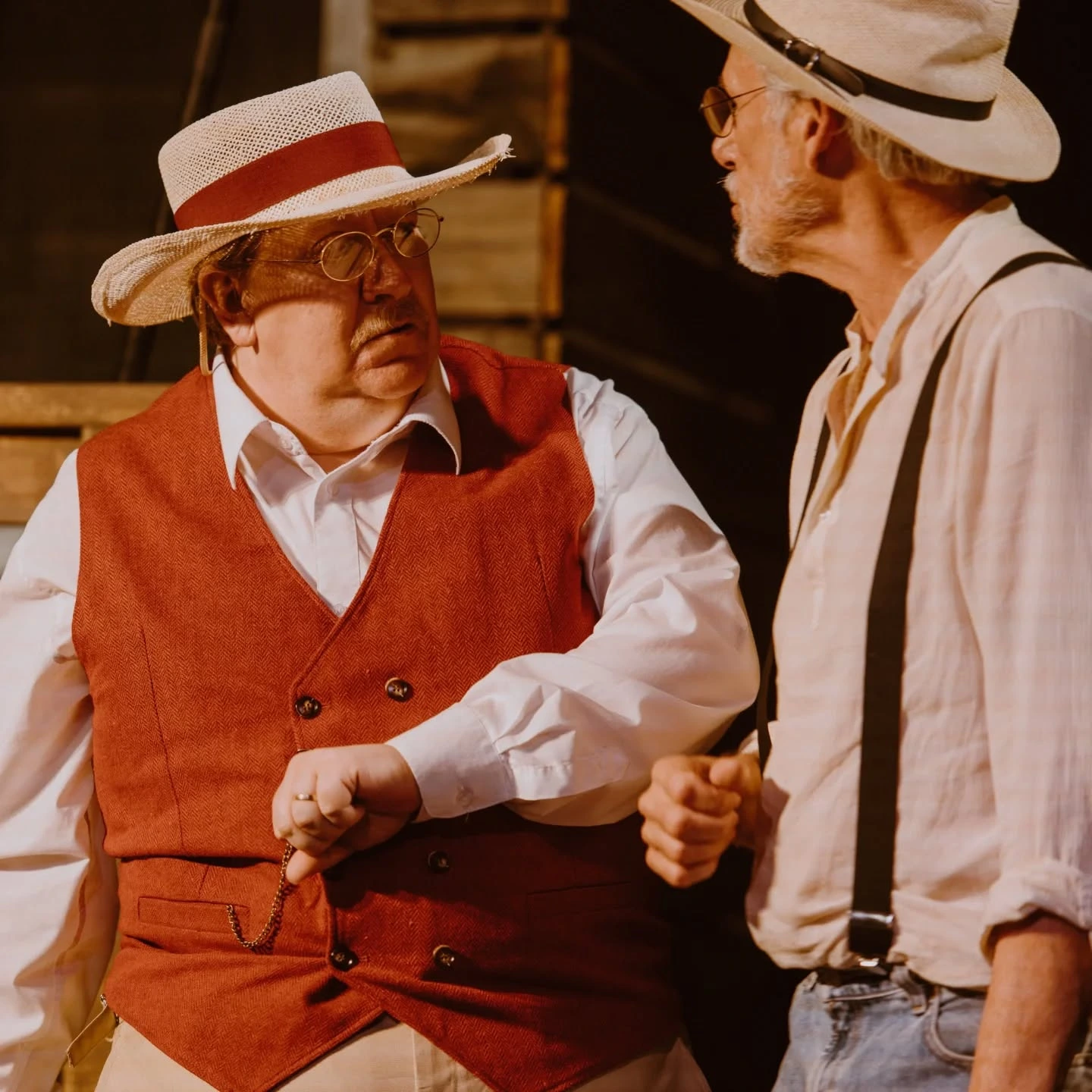
ABET’s production gives A Moon for the Misbegotten a raw, immediate pulse that O’Neill’s script doesn’t always earn. The cast draws out the tenderness and ache in a story weighed down by its dated view of womanhood, where Josie’s strength is tied to her supposed sin and her worth to her denial of it. The emotional climax lands not as redemption but as exhaustion — a man unburdening himself onto a woman asked to absorb it all, when what he really needs is a therapist. Hammond and his cast don’t hide that imbalance; they confront it, turning O’Neill’s flawed vision into something sharper and more revealing than he ever intended.
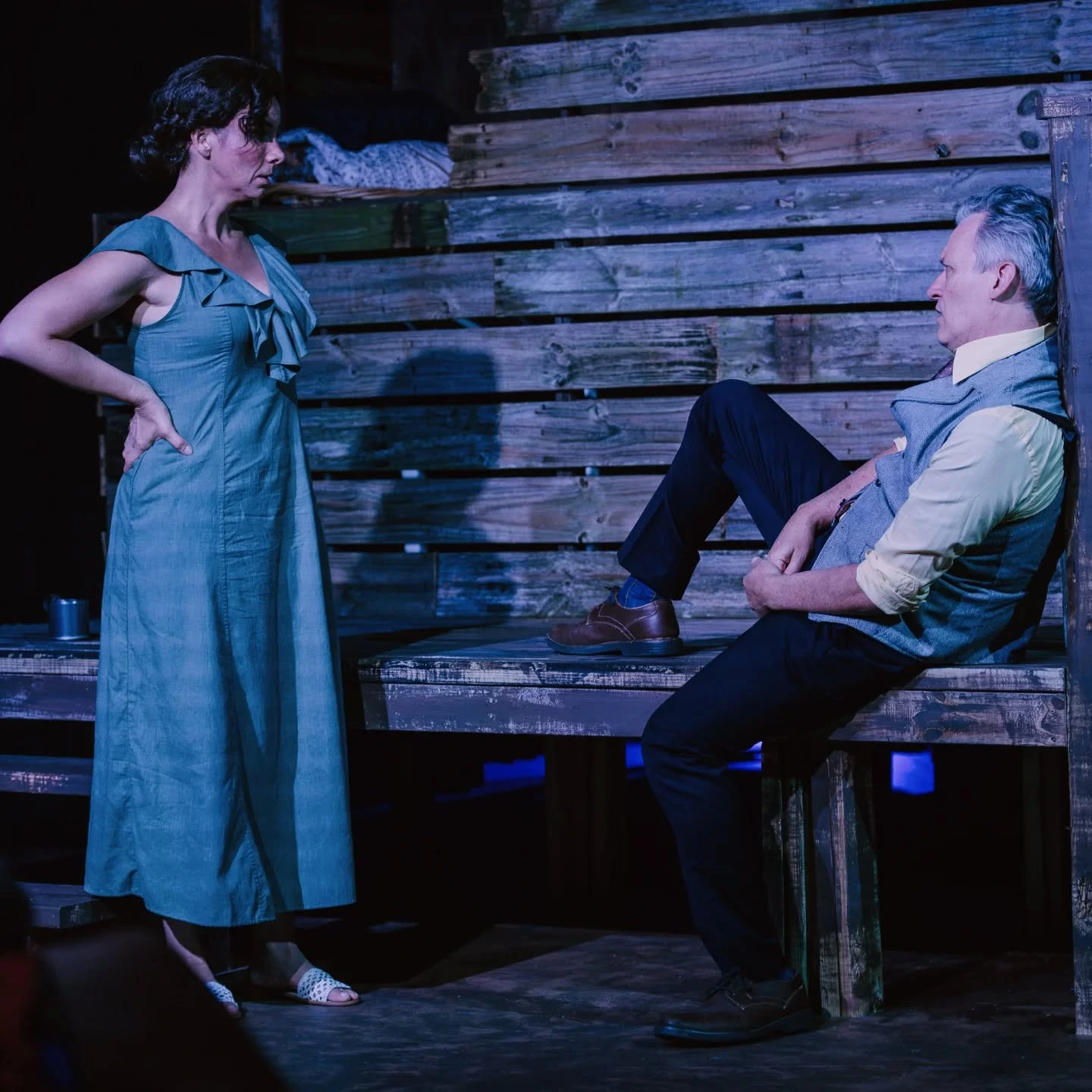
A Moon for the Misbegotten runs Thursday, October 9 through Sunday, October 19 at the WJCT Studio B.
For more information, full cast and crew credits and links to tickets, visit the A Moon for the Misbegotten page here on JaxPlays.
JaxPlays applauds our sponsors. Join them.
